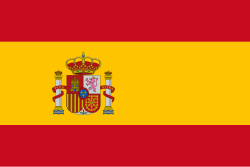Every September 23rd, the world comes together to commemorate the International Day of Sign Languages, a date that highlights the importance of these languages in the lives of millions of deaf people.
In a world where approximately 72 million people live with hearing impairments and use more than 300 sign languages, it is essential to recognize the crucial role these languages play in the personal and social development of their speakers.
In the specific case of Cuba, Sign Language is not only a means of communication; it is a symbol of identity and cultural heritage for the nation’s deaf community. This visual-gestural-spatial language allows its members to communicate without restrictions, promoting their linguistic and cognitive development.
In a country where more than 52,000 people belong to this group, the recognition and use of their own language are essential to guarantee their full inclusion in society. In this regard, the Convention on the Rights of Persons with Disabilities establishes that these languages have the same status as spoken languages, thus urging states to promote their use and teaching.
In this context, the Cuban Sign Language Decree-Law, approved by the Council of State, represents a significant step forward toward equal opportunities. This law regulates the recognition and use of the official language of the Deaf Community in Cuba, aligning with the principles of the Constitution in force since 2019.
Cuban Sign Language is characterized by four distinctive elements: placement, orientation, movement, and hand configuration. Although these components may seem simple in isolation, together they create a system rich in meaning that reflects the cultural diversity of the country’s deaf community.
Mastery of this language not only enhances the receptive and memory skills of its speakers, but also promotes their social integration. Early access to language instruction from childhood and to services in this language is vital for human growth and development.
Bilingual education, which includes the teaching of sign language alongside oral language, is essential to ensure that deaf students reach their full academic and personal potential. Furthermore, it is increasingly necessary to expand their knowledge to the rest of society to achieve greater family and social interaction.
Likewise, the National Association of the Deaf of Cuba (ANSOC), which has worked since 1978 for the social integration and improvement of the quality of life of this community, plays a key role in this process.
Today, as we celebrate the identity and rights of the deaf community, we remember that sign language is more than a means of communication; it is a cultural expression that deserves to be recognized and valued.Promoting its use and teaching is a step toward a more just and inclusive society, where everyone has equal opportunities to participate and prosper.
- Faith in Tomorrow - 25 de December de 2025
- Holguin, host of the main event for Cuban Science Day - 24 de December de 2025
- Investments in Holguin to Protect the Environment - 23 de December de 2025

